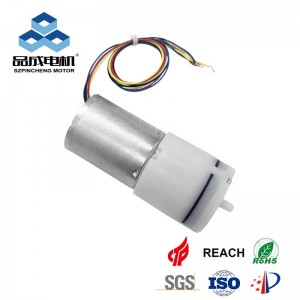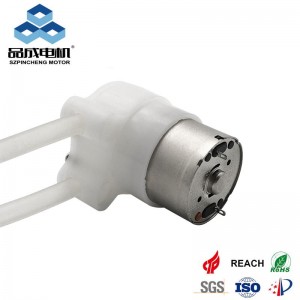If you need to move thick, abrasive, or delicate fluids, you’ve likely encountered an Air Diaphragm Pump. Known for their versatility and rugged design, these pumps are workhorses in industries from manufacturing to wastewater treatment. But what exactly is going on inside one? This article breaks down the simple yet brilliant operation of an Air Operated Double Diaphragm (AODD) pump.
What is an Air Diaphragm Pump?
An Air Diaphragm Pump, more accurately called an Air Operated Double Diaphragm (AODD) Pump, is a type of positive displacement pump that uses compressed air as its power source. It utilizes two flexible diaphragms reciprocating back and forth to create a temporary chamber that draws in and expels the pumped fluid.
Its key advantage is that it’s explosion-proof (the power source is air, not electricity) and can run dry indefinitely without damage. It can handle an incredibly wide range of fluids, from clean water to viscous sludges and solids-laden slurries.
The Core Components: What’s Inside?
To understand how it works, you first need to know its key parts:
-
Two Diaphragms: Flexible membranes (often made of rubber, thermoplastic, or other elastomers) that move back and forth.
-
Two Liquid Chambers: The spaces where the liquid is held before and after being pumped.
-
Two Air Valve Assemblies: The "brain" of the pump that directs compressed air.
-
A Central Air Valve Shaft: Shifts the air flow from one side to the other.
-
Check Balls: One set on the inlet side and one on the outlet side for each chamber. These balls ensure fluid flows only in one direction.
The 4-Step Pumping Cycle: How It Works
The operation is a continuous cycle of four main steps. Imagine the pump starting with the left diaphragm pushed inward.
Step 1: Left Stroke - Discharge
-
Compressed air is directed behind the left diaphragm, forcing it inward into the liquid chamber.
-
This pressurizes the chamber and forces the liquid out.
-
The left outlet check ball is pushed off its seat, allowing liquid to exit through the discharge port.
-
Simultaneously, the left inlet check ball is sealed against its seat by the pressure, preventing backflow.
Step 2: Left Stroke - Simultaneous Intake on the Right
-
As the left diaphragm is pushed in, the right diaphragm is being pulled out. This is because the two diaphragms are connected by a common shaft.
-
This retraction creates a vacuum in the right liquid chamber.
-
This vacuum sucks fluid into the chamber from the inlet port, lifting the right inlet check ball off its seat.
-
The right outlet check ball remains sealed shut by atmospheric pressure.
Step 3: The Shift
-
Once the left diaphragm completes its stroke, the central air valve mechanism automatically shifts. This redirects the compressed air from the left side to the right side.
Step 4: Right Stroke - Discharge & Left Intake
-
The process now reverses.
-
Compressed air pushes the right diaphragm inward, discharging the liquid that was just drawn in.
-
Simultaneously, the connected left diaphragm is pulled back, refilling its chamber with new fluid from the inlet.
This cycle repeats automatically, back and forth, creating a smooth, pulsating flow that is highly effective for pumping difficult materials.
![AODD Pump Cycle Diagram]
(A simple diagram showing the two stages would be placed here for visual explanation.)
Key Advantages of the Air Diaphragm Pump Design
This unique mechanism offers several critical benefits:
-
Can Run Dry: Since there are no internal parts that require liquid for lubrication, an AODD pump can run dry indefinitely without harm.
-
Self-Priming: They are excellent self-primers and can often lift liquid from several feet below the pump.
-
Variable Flow & Pressure: The flow rate is easily adjusted by simply increasing or decreasing the incoming air pressure. Closing the discharge valve will simply cause the pump to stop; it won't deadhead and burn out like a centrifugal pump.
-
Handles Solids & Abrasives: The wide flow paths and check ball design allow the pump to handle solids and viscous materials that would clog other pumps.
-
Explosion-Proof: With no electric motor and the power source being compressed air, they are intrinsically safe for use in hazardous environments.
-
Seal-Free Design: There are no mechanical seals to leak or fail, which drastically reduces maintenance.
Common Applications
Thanks to their rugged design, AODD pumps are used everywhere:
-
Transferring Chemicals: Acids, solvents, adhesives, and paints.
-
Mining & Construction: De-watering pits and moving sludge and slurries.
-
Food & Beverage: Handling viscous products like creams, pastes, and batches with solids (like fruit pieces).
-
Wastewater Treatment: Moving flocculants, sludges, and treatment chemicals.
-
General Industrial: Loading, unloading, and transferring a vast array of materials.
Conclusion
The air diaphragm pump operates on a beautifully simple principle of alternating air pressure and reciprocating diaphragms. This simplicity is the source of its incredible reliability and versatility. Whether you're dealing with delicate shear-sensitive fluids or the toughest abrasive slurries, the AODD pump provides a safe, efficient, and controllable solution for complex pumping challenges.
you like also all
Read More News
Post time: Aug-22-2025




